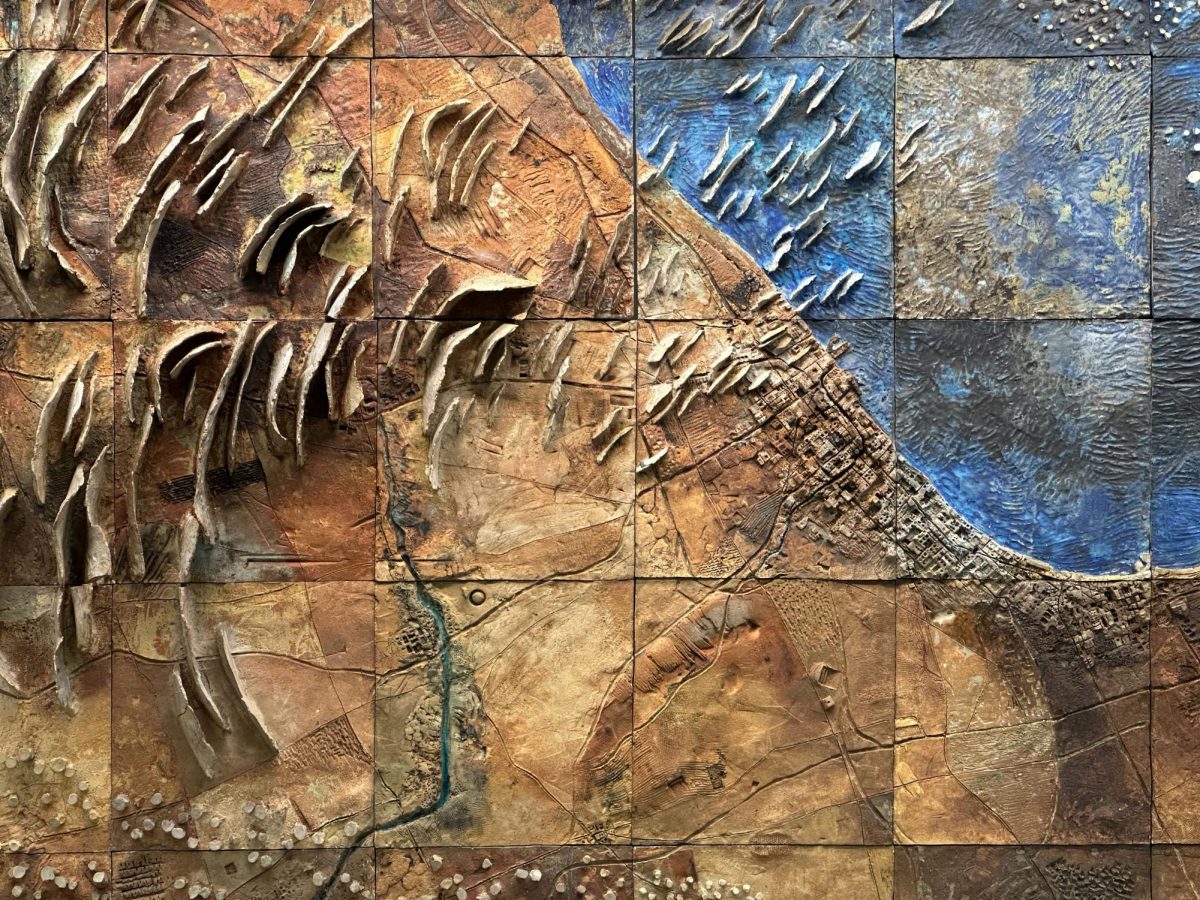Life As A Unity opened at the Smart Museum on September 21. This monographic exhibition of nearly 60 pieces—the first such monograph at the museum since 2005—highlights the natural and sociopolitical elements that influenced Ruth Duckworth, along with her works. The showcase draws inspiration from a 2021 course, Ruth Duckworth and Ceramics in Chicago.
Laura Steward, curator of public art at the Smart Museum, led the class and research surrounding Duckworth, which culminated in the organization of this exhibit. Steward joined the Smart Museum’s staff in 2018 after a period of museum leadership at the University of Chicago and in Santa Fe.
Beyond Duckworth’s pieces, the Smart Museum uses contextual pieces in Life As A Unity to convey the organic components that informed her work. Grainy landscape photographs by professor Tetsuya Fujita—who researched at the University of Chicago from 1953 through 1990 and influenced Duckworth’s cloud formations—decorate one wall, while videos of Duckworth’s artistic process adorn another. Viewers journey through her work and then enter a semi-obstructed room to see Duckworth’s natural and interpersonal inspirations. The contextual fragment of Life As A Unity shines a new light on the elements that drive her appreciation of Earth.
Duckworth’s work invokes a feeling of serenity that stems from the intricacy of wildlife. Each piece feels raw, with rough edges and earth tones that place spectators into the imperfection that is the natural world. Her artistry is reminiscent of the topographical features that define our geography, with a playful back-and-forth of negative space in each sculpture.
Other pieces capture the fluidity of the human physique. The ambiguity of Untitled (1972) challenges us to picture a human mouth, ribs, or vagina. Smooth bodily forms draw a contrast with the rougher elements of Duckworth’s landscape pieces. In an unpublished personal journal, she wrote, “There is only one-ness, all else is words and pain and senseless reasons.” This embodies the overarching theme of this exhibition: Though humans and our environment manifest differently, we are intrinsically connected by the “one-ness” that comes from occupying Earth.
Though much of her work was developed in the sociopolitical climate of the 1960s and 1970s, the ethos that drove Duckworth’s appreciation of nature still holds true today. In an increasingly digital world, the work’s emphasis on our inherent connection to the environment invites viewers into self-contemplation.
Whether through aerial or visceral pieces, Duckworth invokes the core quality of humanity: that we inevitably return to nature. Even the most absolute artworks allow for ambiguity in their interpretation. Duckworth’s art can be understood in whatever way one pleases.
Visitors to Life As A Unity can view more of Duckworth’s work by visiting the Joseph Regenstein Library and the Henry Hinds Laboratory for Geophysical Sciences. The former displays Clouds Over Lake Michigan in the first floor reading room. This nine-foot-by-25-foot public art piece, Duckworth’s second large-scale mural, is composed of 65 clay tiles, drawing on Lake Michigan and its watershed. Clouds was created in 1974 for Dresdner Bank executives, later moving to Cboe Global Markets in 1984. The laboratory’s 1968 Earth, Water, Sky was commissioned by Julian Goldsmith, then chair of the University’s Department of Geophysical Sciences. This was Duckworth’s first mural, meant to unify Goldsmith’s academic building. Compared to Clouds, the latter work takes a more holistic approach, melding air, topography, and natural bodies.
60 years after the bulk of Duckworth’s work, her meditative works draw viewers in to see the exquisite in what’s seemingly mundane. Viewers can visit the Smart Museum between the hours of 10 a.m.–4:30 p.m. Tuesday–Sunday through February 4 to view Life As A Unity. The Regenstein Library is open from 8 a.m.–12 a.m., and the Henry Hinds Laboratory for Geophysical Sciences is open between 8 a.m.–5 p.m. seven days a week.









